Rhiannon and Yvan from our Seabird Working Group recently had the chance to catch up with Juliana Coffey, one of the main seabird biologists working with the seabird populations and local communities in St Vincent and the Grenadines and Grenada, to hear about her recent seabird-related activities!
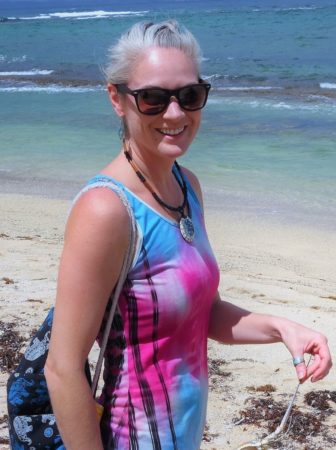
BC: How did you get involved with seabirds in general, and what is your experience with seabirds?
Juliana: I am originally from the island of Newfoundland, off of northeastern Canada. Newfoundland and its surrounding areas are home to millions of breeding seabirds, and our offshore waters are known as a “busy marine bird highway”. So, seabirds are a core part of our natural and cultural heritage: our fisherfolk have their own local names, folklore, superstitions, and knowledge of seabirds acquired over generations at sea.
I first became involved with seabirds when I was 16 through a summer internship at the local university. I was working as a field assistant for a well-known marine ornithologist who exposed me to seabird research and conservation. This was my first taste of field work, and first experience working directly with fisherfolk and indigenous communities on seabird issues. Over the next 20 years, I built up a significant amount of sea-time, including pelagic trips in the Atlantic, Arctic, Indian and Southern Oceans, and have lived at sea or in a tent for months at a time. I have been involved in various types of seabird research, including studies on satellite telemetry, marine debris, nest shelter construction, traditional knowledge collection, as well as outreach activities. Most of these activities have focused on seabirds in the Atlantic and Indian Oceans.
BC: Can you tell us about the Grenadines and how you ended up working with seabirds there?
Juliana: The Grenadines Island chain consists of about 80 islands, islets and cays spanning approximately 100 kilometers. We refer to this region as “transboundary” since these islands are politically divided between the nations of Grenada and Saint Vincent and the Grenadines. Despite there being numerous islands, only nine are inhabited.
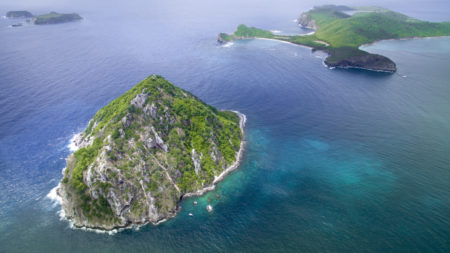
I first came to the Grenadines in 2011 through an internship at the Sustainable Grenadines organization on Union Island, where my work involved conducting bird surveys for the Caribbean Waterbird Census. Through this role, I started to become more familiar with Caribbean seabirds, as well as migrant species from North America. It was interesting to see the same species I recognised from my work further north, and to realize how far they travel on a yearly basis!
BC: You co-authored a book on Grenadines’ birds. Can you describe that project and explain how you incorporated local knowledge?
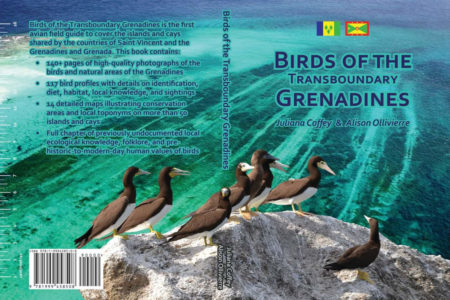
Juliana: In most of my prior work elsewhere, I always had a field guide to consult when I was challenged with identifying a bird, or wanted to know its habitat or range. Nothing of that sort existed at the time specifically for Saint Vincent and the Grenadines or Grenada. Because I had no idea what a mammoth task writing a field guide would be, I naïvely decided to initiate what ended up being quite a consuming project. Luckily, my co-author Aly Ollivierre (BirdsCaribbean) got involved very early on, and we were able to motivate each other through the process. We finally released the book last year.
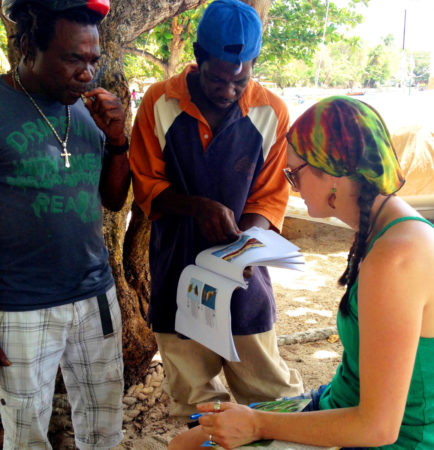
I had spent many years working in the Canadian north on Inuit lands, where traditional knowledge and experience is valued, especially with regards to resource management issues, and I had worked on many projects that utilised this undocumented knowledge. When I began the bird book for the Grenadines, I wanted to gather as much information as possible. I was keen to gather local knowledge, local names, folklore and cultural appreciation of birds in the Grenadines and to include it in the book. The aim was to create a final product that would be of interest to the local communities and build a bridge between culture and conservation. The most rewarding part of this project was returning to the Grenadines with printed copies and showing individuals how their knowledge had been represented. This was an opportunity to preserve and promote this piece of heritage for future generations.
BC: You are now working as a Project Coordinator for Environmental Protection in the Caribbean (EPIC). Can you tell us how you became involved with EPIC and more about your role?
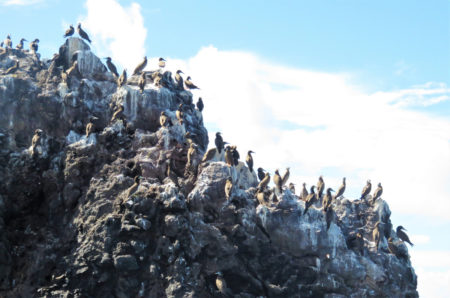
Juliana: I first became interested in EPIC when I learned of their monumental efforts to survey all the seabird breeding colonies throughout the Lesser Antilles between 2009-2010. These surveys documented three sites of global importance and 18 of regional significance, on remote and inaccessible islands in the Grenadines island chain. Prior to this, little was known about breeding seabirds on these islands. EPIC’s surveys put this archipelago on the map as one of the top breeding seabird hotspots in the region! Twelve seabird species breed on these islands and over thirty more species have been recorded. However, many of these populations are threatened by human activities such as illegal harvesting, the presence of rats, cats and goats, periodic vegetation control fires in colonies, and coastal development.
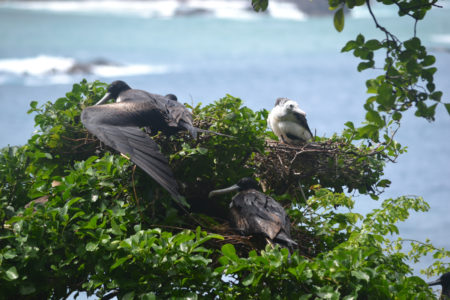
I first became involved with EPIC as an Associate in 2017, and have been working as their Project Coordinator for the Grenadines program for the past two years. My role with EPIC includes a wide range of tasks, including fieldwork, training, and coordinating local citizen scientists, grant and report writing, and advocacy and outreach. My work involves enhancing awareness of threatened seabirds in the region in general, and promoting their protection locally and internationally. I work closely with the project team, including Natalia Collier (Program Director), Lystra Culzac (Lead Educator), and Quincy Augustine (Project Assistant).
BC: EPIC recently compiled a conservation plan for seabirds of the Grenadines. Please tell us more about this and how it developed?
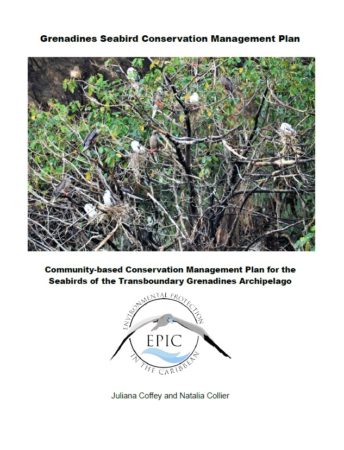
Juliana: The community-based conservation management plan was developed through stakeholder consultation throughout both nations. It draws together all available information on seabirds from these remote islands. The twelve breeding species were each given a profile including information on population size, their breeding distribution, and the timing of their annual cycles. The document also includes an overview of what threats exist on particular islands and throughout the region; the legal context for protection; human values for seabirds; information on what other endangered and endemic species are found on the islands; and finally, recommendations for future research and management. This is the first time much of this information has been presented side-by-side, and we hope that it can be used as a planning document for seabirds and island conservation in the Grenadines going forward.
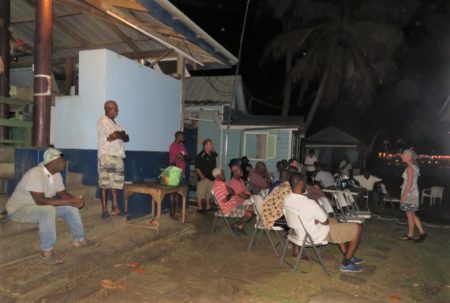
BC: Can you tell us more about your involvement in the training of citizen scientists?
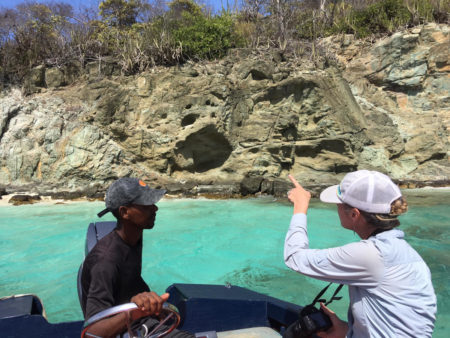
Juliana: Many of the breeding colonies in the Grenadines are remote and difficult to access. As there are over 80 islands and cays in the Grenadines, enforcement and monitoring is incredibly complicated and often not feasible due to the high costs and human input required. Nevertheless, many of these uninhabited islands are visited regularly by fisherfolk, tour operators and recreationists from nearby inhabited islands. We wanted to develop a program that could address the challenges of research and monitoring while increasing local awareness and involvement.
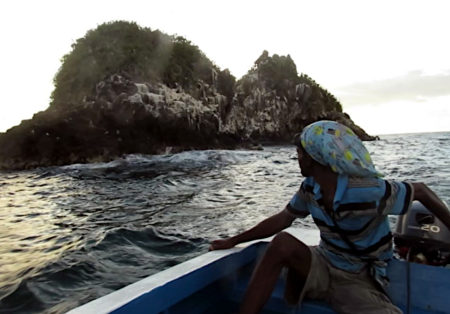
Over the course of several years, through group and one-on-one trainings, we have formed a dedicated team of citizen scientists called the “Grenadines Seabird Guardians”. Members of this group visit seabird colonies and collect population estimates, as well as information on threats. I provide ongoing support to the Guardians on seabird identification and maintain a central database of observations. Communication within the group is primarily through WhatsApp where members can share their observations and provide support to one another. Some of the Guardians were recently involved in cleanups at offshore islands which host nesting seabirds, but which have not previously been the focus on conservation efforts.
BC: What kind of specific information are the Guardians reporting?
Juliana: Despite all the complications that Covid-19 restrictions have caused in 2020, this has actually been our best year for receiving reports from the Guardians. Anyone involved with seabird research would probably agree that studying seabirds is a great way to self-isolate! This year, we have received reports of seabird egg and chick harvesting, a threat previously identified by EPIC as one of the most pressing for seabirds in this region. We are also receiving reports of introduced mammal sightings, marine litter, vegetation control fires and human disturbance. Through this program, we have also documented rare sightings of seabirds such as Lesser Black-backed Gulls. The work is therefore enhancing our knowledge of how the region is used by non-breeding resident and migratory seabirds. In 2019, we also documented a thriving Magnificent Frigatebird colony on one of the islands. This turned out to be one of only four in the Lesser Antilles, and the only one known from the southern islands!
BC: There seem to be many human-induced threats in the Grenadines. What work is being done in terms of outreach and education?
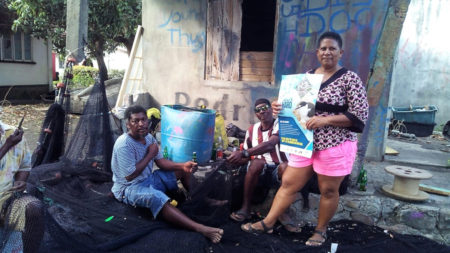
Juliana: Because many of the threats are related to human activities, we are strategically making efforts to show people how important seabirds are to their culture and livelihoods in the Grenadines. Fisherfolk for example use seabirds to find fish, navigate and understand weather patterns. They have superstitions concerning certain species. For example, storm petrels are believed to indicate that bad weather is coming! Seabird guano fertilizes coral reefs and nearshore habitats adjacent to their colonies, which in turn benefits fisheries and tourism. Seabirds in many other areas have actually become viable ecotourism attractions, which is something we want to promote as an option for supplemental or alternative livelihoods in this heavily tourism-dependent region.
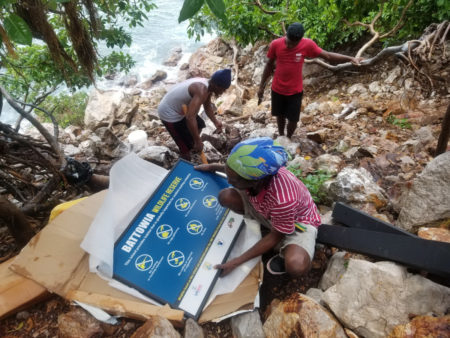
To reach the various groups involved in management, including the general public, we have designed a multi-faceted education program, targeting various age groups and sectors. Lystra Culzac, our Lead Educator, conducts school and community presentations and has recently drafted a school curriculum that we are aiming to integrate into the school systems in both nations. We have also recently launched a Waste-to-Art contest open to residents of Grenada and Saint Vincent and the Grenadines. Earlier in 2020 we released a mini-documentary which is intended to reach a wide audience, and we also issue monthly press releases to local and regional media. We have also designed and distributed posters and brochures concerning seabirds. We conducted an updated “harvest study” to determine the extent that seabird chick and egg consumption is still practiced. We also installed “Wildlife Reserve” signs on two major colonies with the help of several fisherfolk from Carriacou and Bequia. This was a nice transboundary collaboration between fisherfolk coming together for seabird protection.
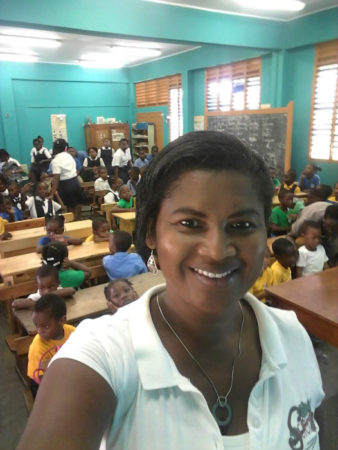
Unfortunately, many islands in the Grenadines are privately owned, and listed on the international Real Estate market. A major hotel and resort development was recently announced for one of the regionally important colonies. Education and awareness can help to mitigate threats from human activity, but if the island is sold to a developer the seabird colonies can quickly disappear. We are working hard to ensure that this doesn’t happen.
BC: What other activities is EPIC hoping to undertake going forward?
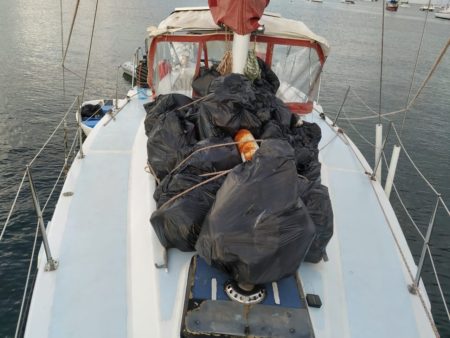
We are using the recent Conservation Plan as a guide for the activities that we undertake. We have recently added several other types of data collection to our citizen science program, which can easily be undertaken by the seabird guardians with minimal training. These include enhanced invasive species surveys using camera traps and tracking tunnels, assessments of the quantity of plastics in seabird nests and feather collection from seabird carcasses for heavy metal analysis. We are hoping to train others in the use of drones and other remote monitoring tools, given that the area is incredibly difficult and expensive to access. It is now over ten years since the last population census, so we are planning to conduct new surveys to allow a better idea of population trends. We also plan to do some telemetry work in the near future, in order to gauge the at-sea movements of some species while away from their colonies, and assess how much seabirds move back and forth between nations when searching for food. This work will hopefully promote the reality that seabirds are a shared resource. To successfully preserve them in areas such as the Lesser Antilles requires management cooperation from multiple nations.
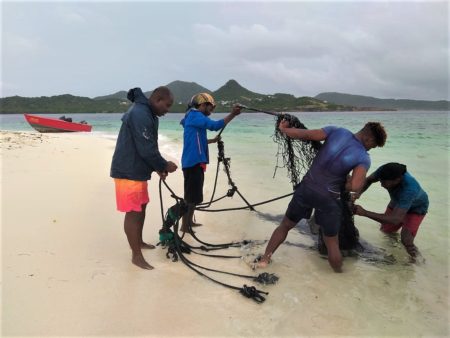
One of the core items in the Conservation Plan is the formation of a transboundary wildlife working group, focused on seabirds, who met virtually for the first time in early November. This group consists of various stakeholders from both nations, such as fisherfolk, forestry officers, NGOs, tour operators and biologists. This group was put together to begin implementing priorities from the Conservation Plan, and to continue the momentum of participatory management.
We also recently undertook several beach clean-ups at known seabird colonies; this is the first time that these islands have received any attention for litter removal. We hope that these activities will ensure that seabirds have a safe place to nest and rear their young. As litter keeps arriving on these shores from both local and distant sources, we hope to continue these clean-ups during our regular seabird surveys.
BC: What is your favorite part of your work in the region?
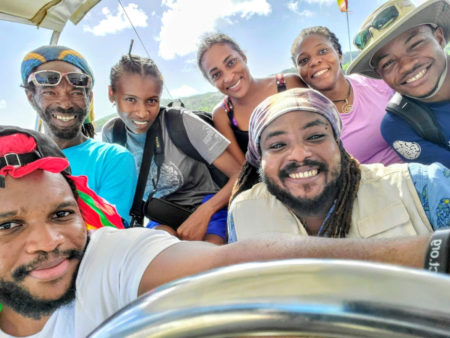
Juliana: Just as seabirds unite air, land and sea, we have been able to unite people in both nations (and beyond), through seabirds. With our Seabird Guardians program, it has been wonderful to see individuals take leadership roles, and also to deploy multi-disciplinary teams that are able to learn from each other. This has enabled us to discover much along the way, such as the Magnificent Frigatebird colony on Battowia. Such discoveries highlight the need to take swift conservation action in the region.
The small and seemingly insignificant moments are really the most memorable. For example, during a fisherfolk consultation last year, one younger fisherman expressed a lot of interest in learning more about seabirds, as he was aware that it could make him a more successful fisherman. Cases such as this provide positive feedback that our discussions with community members are having an impact, and that individuals are able to find links to their own livelihoods about why seabirds matter. I suppose my favorite part overall is that, despite populations in the Grenadines being highly threatened, the seabird colonies are still quite remarkable. This is really at the core of why we do that we do, and to speak up for these seabirds who cannot advocate for themselves.
We thank Juliana and the team at EPIC for their efforts on seabird conservation in the Grenadines, and look forward to hearing more about EPIC’s activities in the future. For more information on the work that EPIC does, please visit the organization’s website at www.epicislands.org or follow its Facebook page at https://www.facebook.com/epicislands

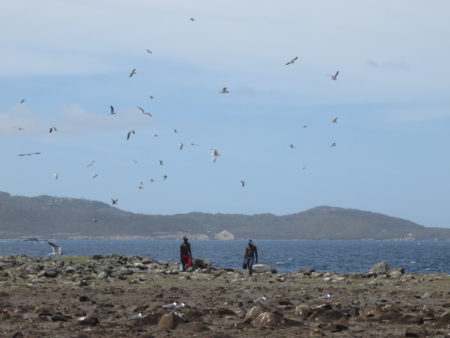
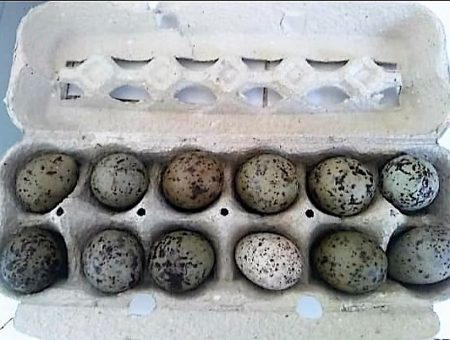
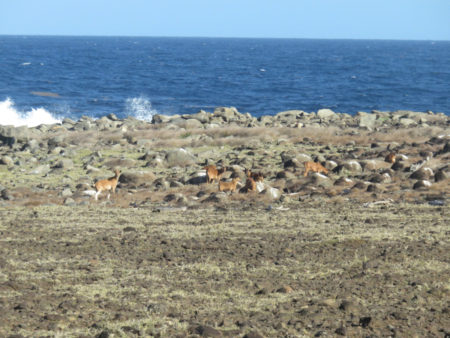































Impressive efforts Julianna … as we made our deliveries to The Gathering Place today [Ken’s obituary suggestion], I was thinking about how poverty can imprison people, lay out their landscapes and limit their choices. It takes a lot of positive effort and reinforcement to move along those gradients and you are on the right path. Onward young woman … onward
Many thanks for your comments and encouragement to Julianna! We are very proud of her work! All the best, Lisa Sorenson